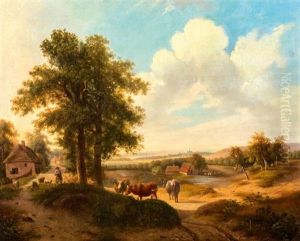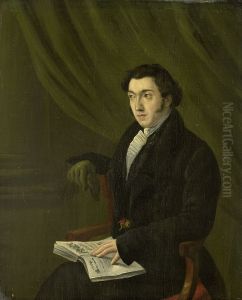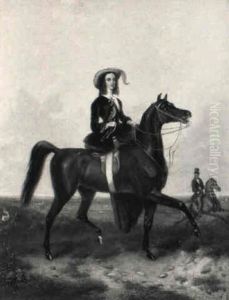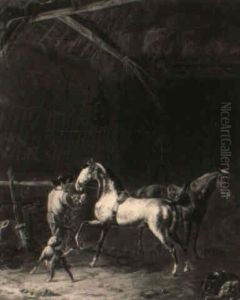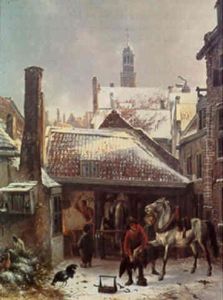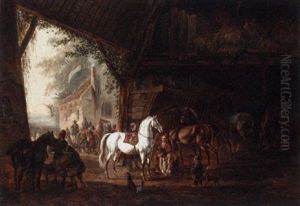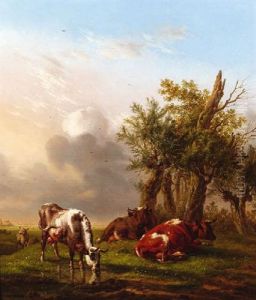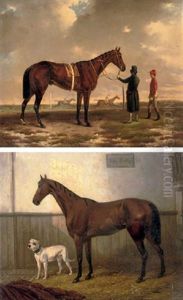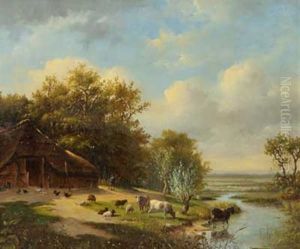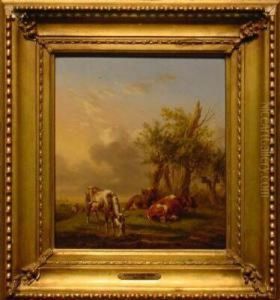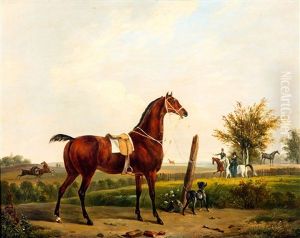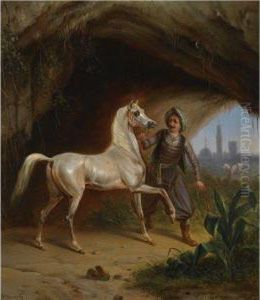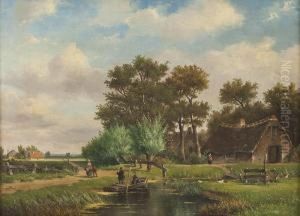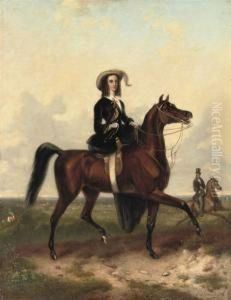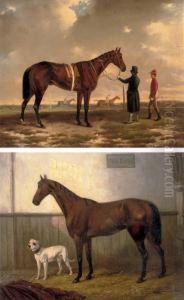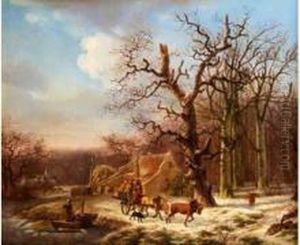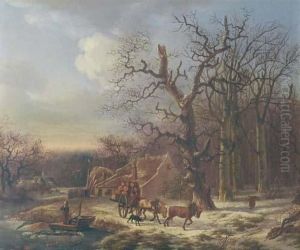Abraham Hendrik Winter Paintings
Abraham Hendrik Winter, often known simply as A.H. Winter, was a Dutch painter born on June 28, 1882, in The Hague, Netherlands. He was an artist who mostly stayed true to the classical traditions of Dutch painting, finding his niche in the landscape and genre scenes reminiscent of the 17th-century Dutch masters. Winter's style is characterized by a careful attention to detail and a fondness for capturing the serene beauty of the Dutch countryside and its inhabitants.
He studied art at the Royal Academy of Art in The Hague, which was a leading institution for the fine arts in the Netherlands and was known for its rigorous training and fostering of traditional techniques. Winter would have been exposed to a range of artistic influences during his education, including both the works of the old masters and the contemporary artistic trends of his time.
Throughout his career, Winter exhibited a preference for the timeless over the transient, often shying away from the avant-garde movements that swept through Europe during his lifetime. Instead, he focused on honing his craft within the realms of realism, contributing to the preservation and continuation of classical art forms.
His works were exhibited in various venues, and he gained a modest following during his lifetime. However, A.H. Winter never achieved the same level of fame as some of his contemporaries and remained a relatively understated figure in the art world.
Winter passed away on November 6, 1951, in his hometown of The Hague. Posthumously, his works have been revisited by art historians and collectors who appreciate his dedication to traditional Dutch painting techniques and his ability to evoke a sense of calm and reflection through his pastoral scenes.
Although not a household name, Abraham Hendrik Winter's legacy survives in the quiet charm of his paintings, which continue to be appreciated by those who seek solace in the classic landscapes of the Netherlands. His contributions to art may be seen as a bridge between the past and his present, maintaining a dialogue with the heritage of Dutch art while subtly incorporating the sensibilities of his own time.
